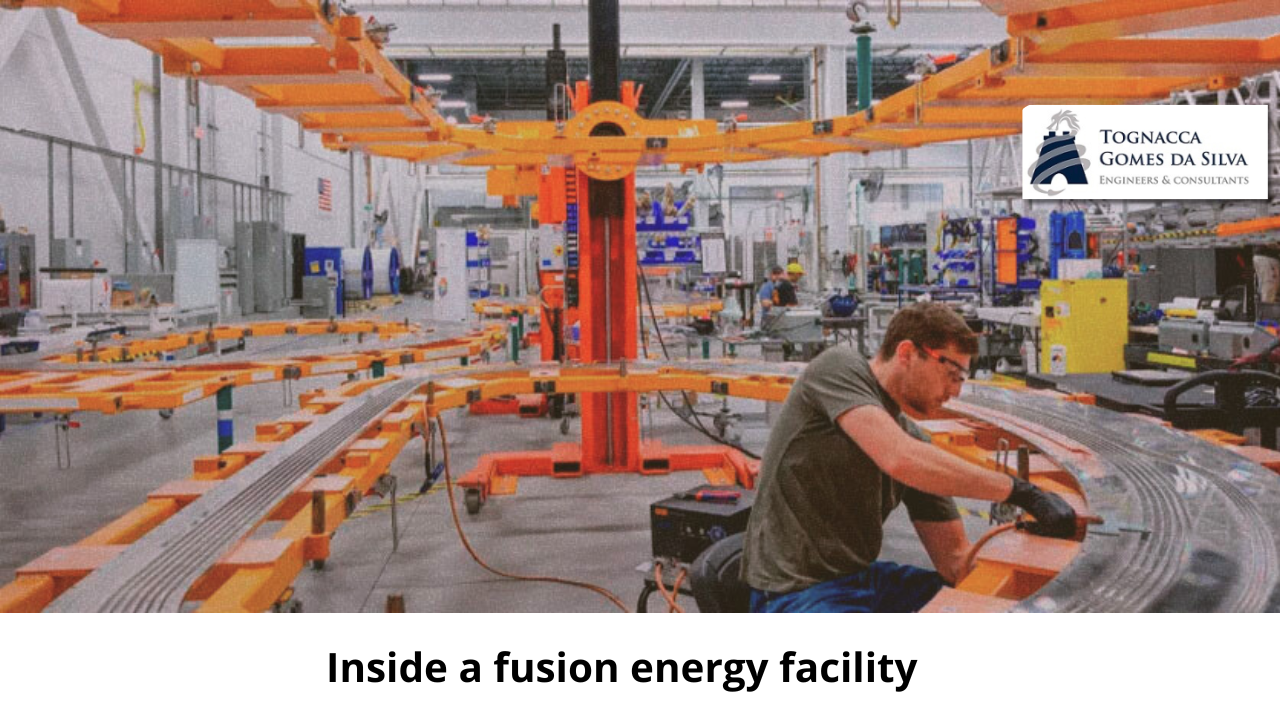On a cloudy day in early October, I rented a car and drove to Devens, Massachusetts, to visit what was, essentially, a large hole in the ground. Commonwealth Fusion Systems has raised more than $2 billion in funding since it originated at MIT in 2018, all toward building the first commercial fusion reactor. The company has ambitions to build power plants, but for now, the objective is to complete the assembly of its first demonstration system, the SPARC reactor, planned to operate until 2026.
I recently visited the company location to monitor progress. Things are starting to take shape around the hole in the ground where SPARC will be installed. Looking around, I began to imagine a future that could actually include fusion energy. But there is still a lot of work ahead.
Fusion energy is an old dream. The idea is simple: unite atoms to release the energy needed to power the world. These systems would require small amounts of abundant fuel and would not produce hazardous waste. The problem is that making this vision a reality has been much slower than many expected.
The Commonwealth is one of the leaders in commercial mergers. My colleague James Temple wrote an article about the company’s attempt to bring this technology to fruition, published in early 2022. At the time, the Devens site was still a muddy construction site, with steel and concrete just beginning to be poured.
Today, the scenario is much more refined. When I visited earlier this month, I parked in one of the designated visitor spaces and checked in to a busy office building before starting the tour. There were two main areas to be explored: the working magnet factory and the set of buildings that will house and support the SPARC reactor.
We started with the magnet factory. SPARC is a tokamak, a device that relies on powerful magnets to contain the plasma where fusion reactions occur. In SPARC, there will be three different types of magnets, all arranged to keep the plasma in position and moving in just the right way.
The company manufactures its own magnets using a ribbon made from a high-temperature superconductor, which generates a magnetic field when passed through by an electric current. SPARC will contain thousands of kilometers of this tape in its magnets. At the factory, specialized equipment rolls the tape and inserts it into metal boxes, which are then stacked and welded into protective coatings.
After a quick tour of the magnet factory, I donned a hard hat, neon vest, and safety glasses, receiving a brief safety training that included a strict warning not to look directly at any welds. We then walked through a courtyard and down a gravel driveway to the main complex of buildings that will house the SPARC reactor.
Except for a few wooden stairs and remaining dust, the complex seemed almost finished. There’s a huge glass wall on the building’s facade — a feature designed to show that the company maintains a transparent relationship with the community about what goes on there, as my guide, marketing director Joe Paluska, explained.
Four main buildings surround the tokamak’s central hall. They house support equipment needed to cool the magnets, heat the plasma, and monitor conditions in the reactor. Most of these large industrial systems that will support SPARC are almost ready to be turned on or in the process of being actively installed, explained Alex Creely, director of tokamak operations, in a call after the visit.
When it finally came time to see the tokamak hall that will house SPARC, we had to take a circuitous route to get there. A maze of concrete walls guided us to the entrance, and I lost count of the left and right turns. Known as a labyrinth, this safety feature is designed to prevent stray neutrons from escaping the hall when the reactor is operating. (Neutrons are a form of radiation, and excessive exposure can be dangerous to humans.)
Finally, we entered a large space. From our elevated vantage point on a metal walkway, we peer into a room with gleaming white floors and equipment scattered around the perimeter. In the center was a hole covered by a tarp and surrounded by bright yellow bars. This empty space is where the protagonist, SPARC, will eventually be installed.
Although there is still very little of the tokamak in the tokamak hall now, the Commonwealth has an ambitious timeline: the goal is to get SPARC up and running and generate the first plasma in the reactor by 2026. The company plans to demonstrate that it can produce more energy in the reactor than than necessary to operate it (a milestone known in the industry as Q>1) by 2027.
When we published our 2022 Commonwealth paper, the plan was to activate the reactor and reach the Q>1 milestone by 2025, but the timeline has been pushed back. It is not uncommon for large projects in virtually every industry to take longer than expected. But there is an especially long and troubled history of broken merger promises and goals.
Commonwealth has certainly made progress in recent years, and it’s becoming easier to imagine the company actually firing up a reactor and reaching the milestones the industry has been working towards for decades. But there’s still a tokamak-shaped space waiting to be filled in suburban Massachusetts.
( fonte: MIT Technology Review)



